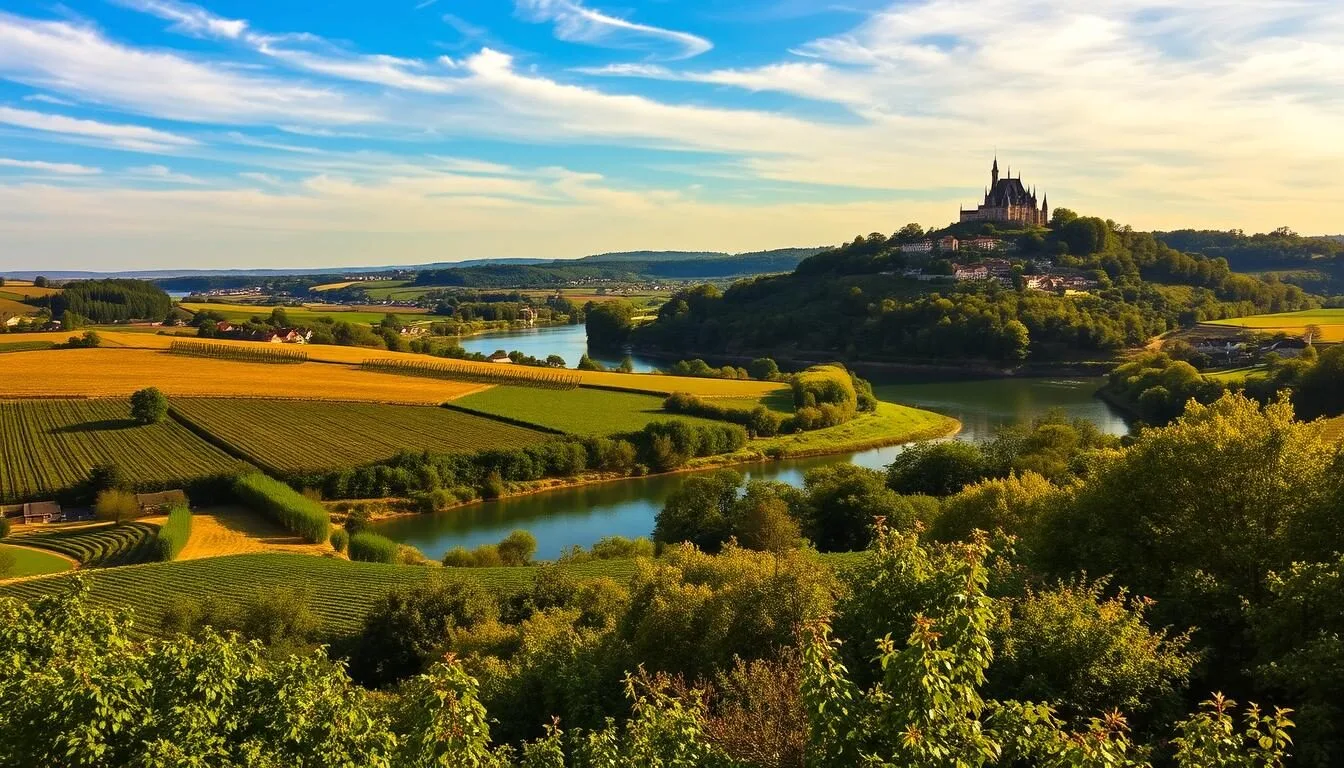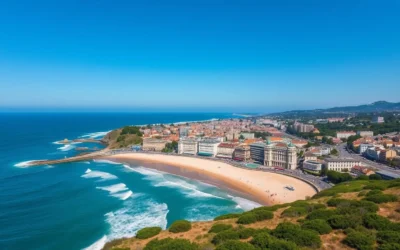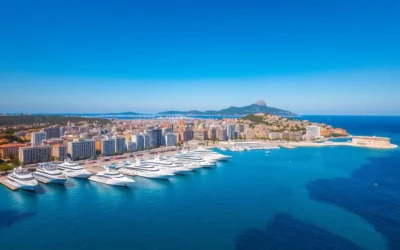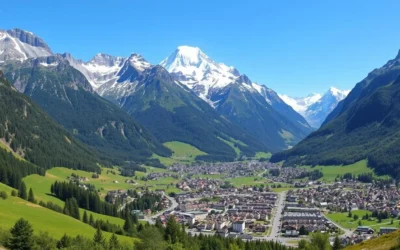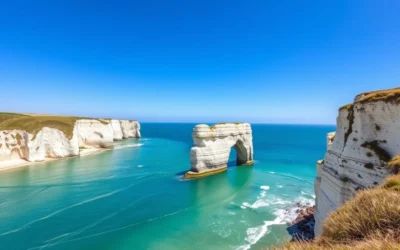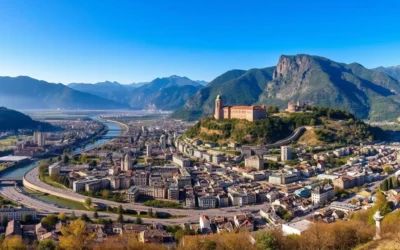✓ Accommodations✓ Flights✓ Rental Cars
Imagine strolling through a picturesque landscape, surrounded by majestic châteaux and lush gardens. The “Garden of France” is a haven for history buffs, nature lovers, and foodies alike.
This UNESCO-listed region boasts an impressive collection of over 300 châteaux, each with its unique story and architectural style. As you explore the Loire Valley, you’ll uncover the rich history and cultural heritage of this captivating destination.
From magnificent royal residences to charming riverside towns, the Loire Valley offers an authentic French experience. Get ready to be enchanted by the beauty and charm of this incredible region.
Discovering the Garden of France
The Loire Valley, situated in central France, is a must-visit destination for anyone looking to experience the best of France. While Paris is a must-see, the true essence of French culture and history lies beyond the capital. The Loire Valley is one of the most famous regions to explore outside of Paris, thanks in part to its proximity to the city.

Where is the Loire Valley?
The Loire Valley stretches approximately 280 kilometers along the middle Loire River basin in central France, roughly a 2-hour drive southwest of Paris. This fertile region encompasses several French départements, including Indre-et-Loire, Loir-et-Cher, Loiret, and parts of Maine-et-Loire and Indre. Its strategic location makes it an ideal day trip or a longer, more leisurely stay.
Why the Loire Valley is a UNESCO World Heritage Site
The Loire Valley earned its UNESCO World Heritage status in 2000 for its exceptional cultural landscape, featuring historic towns, architectural monuments, and cultivated lands shaped by centuries of interaction between people and the environment. The region’s nickname, “Garden of France,” comes from its abundant vineyards, fruit orchards, and vegetable fields that thrive in the valley’s fertile soil. The concentration of architectural wonders, particularly from the 15th and 16th centuries, makes this region an open-air museum of French heritage.
Château de Chambord: A Renaissance Masterpiece
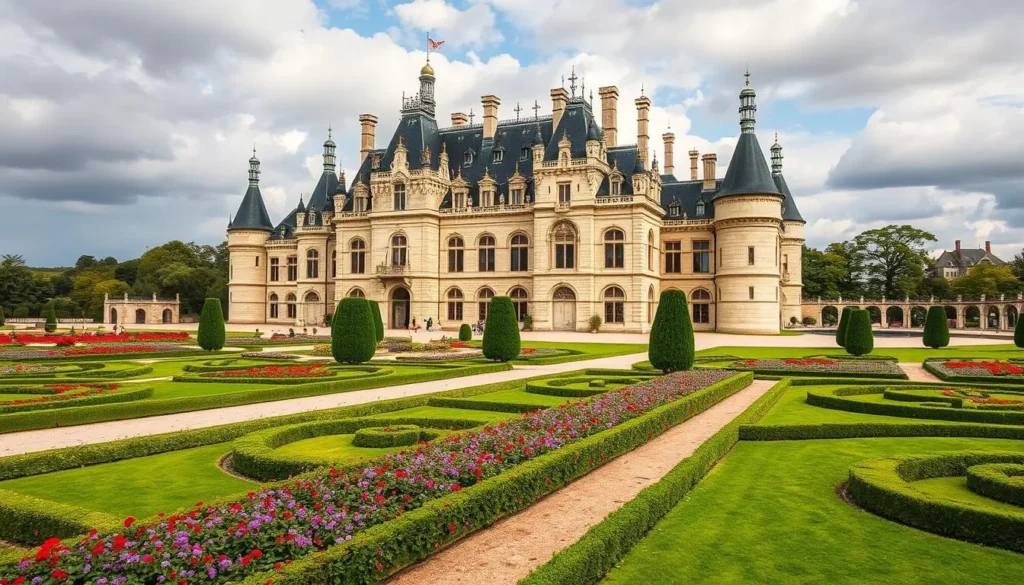
Château de Chambord, commissioned by King François I in 1519, is a masterpiece of Renaissance architecture that continues to captivate visitors today. This iconic castle is situated on the left bank of the Loire River and is renowned for its breathtaking design and historical significance.
The Architectural Marvel of François I
The Château de Chambord is an exemplary model of French architecture from the Renaissance period. Its construction was undertaken on a grand scale, measuring 117 meters by 156 meters, with 440 rooms, 282 fireplaces, and 84 staircases. The famous double-helix central staircase is attributed to the design influence of Leonardo da Vinci.
Exploring the Gardens and Forest Estate
The Château de Chambord is surrounded by an expansive estate spanning 5,500 hectares, with four-fifths of the property covered in pristine forests. The gardens are landscaped in geometric patterns with manicured shrubs and flowerbeds, complementing the symmetrical architecture of the château. Visitors can explore the Italianate terrace, which offers spectacular views and was once the center of court life during royal residencies.
As you explore the Château de Chambord, you’ll be struck by its grandeur and the rich history it embodies. The château’s unique blend of Renaissance style and royal elegance makes it a must-visit destination in the Loire Valley.
Château de Chenonceau: The Ladies’ Castle
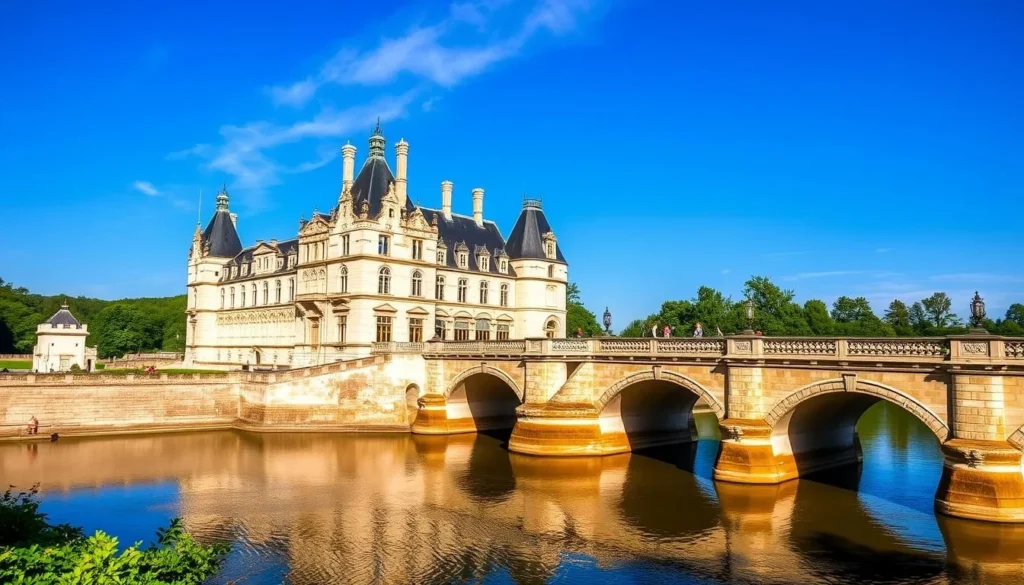
As you wander through the Loire Valley, one of the most enchanting destinations you’ll encounter is Château de Chenonceau. This captivating castle, often called “Le Château des Dames” (The Ladies’ Castle), owes its nickname to the influential women who played a significant role in its history and design, notably Diane de Poitiers and Catherine de Médicis.
The Unique Bridge Over the Cher River
The Château de Chenonceau is renowned for its striking architecture, particularly its Corps de Logis, a two-story gallery built on an arched bridge that spans the Cher River. This distinctive feature creates the illusion that the castle is floating on water, making it a breathtaking sight. The Corps de Logis not only adds to the castle’s aesthetic appeal but also holds historical significance, having served as a secret crossing point for refugees and resistance fighters during World War II.
The Magnificent Gardens of Diane de Poitiers and Catherine de Médicis
The beauty of Château de Chenonceau is further enhanced by its exquisite gardens, which reflect the rivalry and elegance of its former occupants. The Jardin de Diane de Poitiers, designed in the classic Renaissance style, boasts geometrically shaped lawns and flower beds, surrounded by raised terraces adorned with climbing roses. In contrast, the Jardin de Catherine de Médicis offers a more contemplative atmosphere, with rose-covered trellises along walking paths that overlook the castle moat, creating picturesque views of the château.
Inside the castle, you’ll discover rooms decorated with rare tapestries, exquisite furniture, and fresh floral arrangements, showcasing the rich history and elegance of Château de Chenonceau. The castle’s interior, combined with its stunning gardens and unique architecture, makes it a truly unforgettable experience.
Château de Cheverny: A Living Heritage
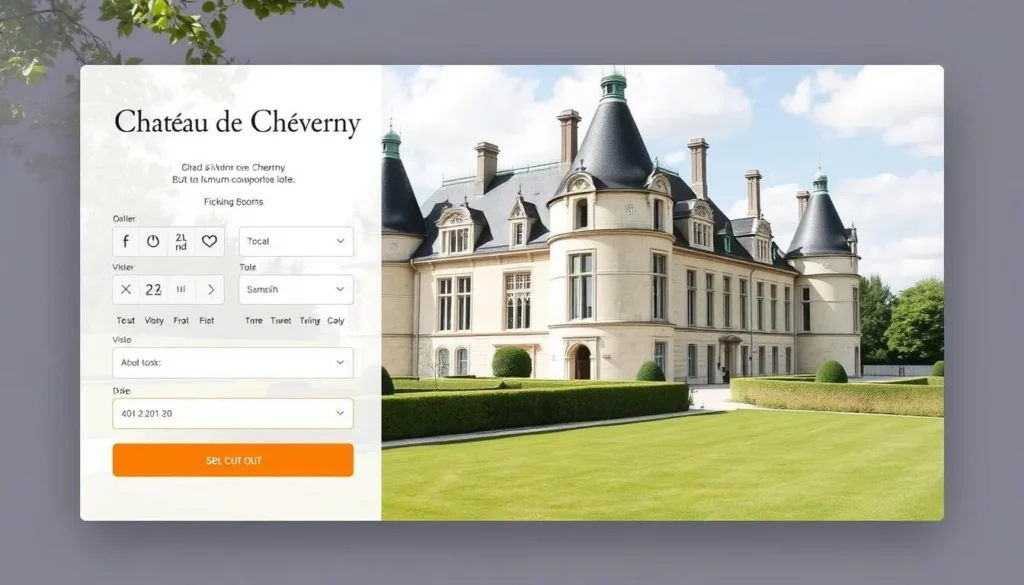
Nestled in the heart of the Loire Valley, Château de Cheverny stands as a testament to France’s rich aristocratic history. This enchanting castle has been home to the same family for over six centuries, offering a unique glimpse into the aristocratic life of the past.
The Château de Cheverny is renowned for its stunning 17th-century architecture and its remarkably well-preserved interiors, which include original furniture and décor such as a 17th-century Gobelin tapestry and a Louis XIV chest. These elements provide a fascinating insight into the aristocratic lifestyle and the history of the family that has resided here.
The Inspiration for Tintin’s Marlinspike Hall
One of the château’s most popular attractions is “Les Secrets de Moulinsart” (The Secrets of Marlinspike Hall), an interactive exhibition inspired by Hergé’s Adventures of Tintin. The château’s architecture was the inspiration for Marlinspike Hall, and visitors can explore recreations of iconic scenes from the comics, including Tintin’s bedroom and the laboratory of Professor Calculus.
The Remarkable Gardens and Parklands
The Château de Cheverny is also celebrated for its beautifully maintained gardens and parklands. The estate features a variety of themed gardens, including the Jardin de Tulipes with over 250,000 tulip bulbs and the romantic Jardin de l’Amour, adorned with bronze sculptures by Swedish artist Gudmar Olovson. Visitors can enjoy a leisurely stroll through the gardens and the surrounding parklands, which include ancient cedars and redwoods, a boating lake, and forest paths.
As a residence that has been continuously inhabited by the Hurault family for centuries, Château de Cheverny provides a genuine glimpse into the past, making it a unique and captivating home to the history of the Loire Valley.
Château Royal d’Amboise and Clos Lucé
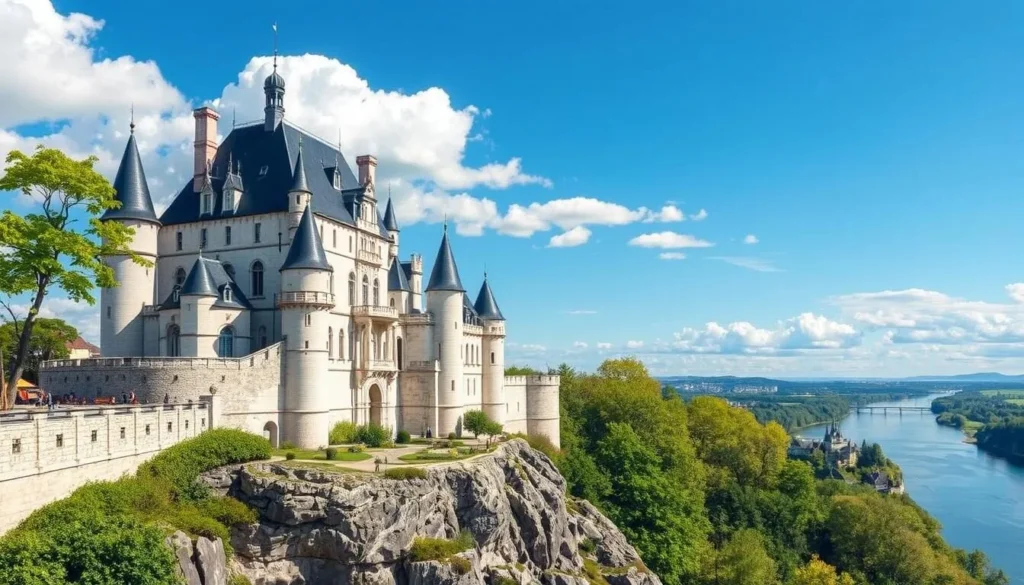
The charming town of Amboise is home to two of the Loire Valley’s most fascinating attractions: Château Royal d’Amboise and Clos Lucé. Château Royal d’Amboise, a majestic castle situated on a rocky cliff, offers breathtaking views of the surrounding landscape.
The Royal Castle on the Cliff
Perched dramatically on a rocky cliff 40 meters above the Loire River, Château Royal d’Amboise commands breathtaking views of the surrounding landscape and served as a royal residence for five centuries. The château’s strategic location made it a favorite residence of French kings, particularly during the Renaissance when Charles VIII extensively rebuilt it in the late Gothic style with its distinctive round towers and ornate façade.
Leonardo da Vinci’s Final Home
Just 500 meters from the royal château is Clos Lucé, the elegant brick mansion where King François I invited Leonardo da Vinci to live in 1516, offering him the title “Premier Painter, Engineer and Architect to the King.” Leonardo da Vinci spent the final three years of his life at Clos Lucé, bringing with him three masterpieces, including the Mona Lisa, and continuing his scientific and artistic work until his death in 1519.
Today, Clos Lucé functions as a Leonardo da Vinci museum, featuring working models of his inventions, recreations of his workshop and living quarters, and interactive displays that bring his visionary ideas to life. The château’s park contains life-size replicas of Leonardo’s engineering designs, including his flying machines, military equipment, and civil engineering projects, allowing visitors to experience the full breadth of his genius.
Other Must-Visit Châteaux in the Loire Valley
The Loire Valley is a treasure trove of châteaux, with many hidden gems waiting to be discovered. As you venture beyond the most famous ones, you’ll uncover a wealth of architectural styles and historical periods, each with its unique charm.
![]()
Château d’Azay-le-Rideau: The Water Castle
Standing on an island in the Indre River, Château d’Azay-le-Rideau appears as a storybook castle, with its façade reflecting beautifully in the water. Built in the 16th century, this Renaissance jewel is renowned for its elegant architecture and exquisite interiors, including rib-vaulted ceilings and Flemish tapestries.
Château de Villandry: Famous for Its Gardens
Château de Villandry is celebrated for its spectacular Renaissance gardens, which come alive during the warmer months. The gardens are arranged in terraces, featuring ornamental flowers, water gardens, and decorative vegetable gardens laid out in intricate patterns, creating a perfect blend of aesthetics and functionality.
Château de Sully-sur-Loire: A Medieval Fortress
Château de Sully-sur-Loire is a grand medieval fortress that transports you back in time. With its moat, massive round towers, and fortified walls, it offers a glimpse into the defensive castles of the past. This château has served as a residence for notable figures, including Maximilien de Béthune and Voltaire.
These châteaux offer a glimpse into the rich history and architectural diversity of the Loire Valley, making them must-visit destinations on your journey.
- Discover the enchanting Château d’Azay-le-Rideau, with its dreamy reflection in the Indre River.
- Explore the magnificent Renaissance gardens at Château de Villandry.
- Experience the medieval grandeur of Château de Sully-sur-Loire.
Charming Cities and Towns of the Loire Valley
Beyond the majestic châteaux, the Loire Valley is home to numerous charming cities and towns that are worth exploring. These historic towns offer a glimpse into the region’s rich cultural heritage, with their medieval quarters, vibrant markets, and picturesque landscapes.
Blois: A City Steeped in History
Blois captivates visitors with its dramatic hillside setting overlooking the Loire River. The city’s Royal Château de Blois is a must-visit, showcasing four distinct architectural styles around one courtyard. You can also enjoy the local cuisine at the Saturday farmers’ market and dine at restaurants like Petit Honfleur.
Tours: The Vibrant Gateway
Tours serves as the perfect base for exploring the Loire Valley, with its excellent rail connections and lively atmosphere. The medieval quarter of Tours features timber-framed houses, charming plazas, and the impressive Cathédrale Saint-Gatien.
Orléans: The City of Joan of Arc
Orléans proudly celebrates its connection to Joan of Arc, who liberated the city from English siege in 1429. Visit the Maison de Jeanne d’Arc museum and the Cathédrale Sainte-Croix, featuring stunning stained-glass windows depicting Joan of Arc’s story.
| City | Main Attraction | Local Experience |
|---|---|---|
| Blois | Royal Château de Blois | Saturday Farmers’ Market |
| Tours | Cathédrale Saint-Gatien | Vieux Tours (Old Town) |
| Orléans | Maison de Jeanne d’Arc | Cathédrale Sainte-Croix |
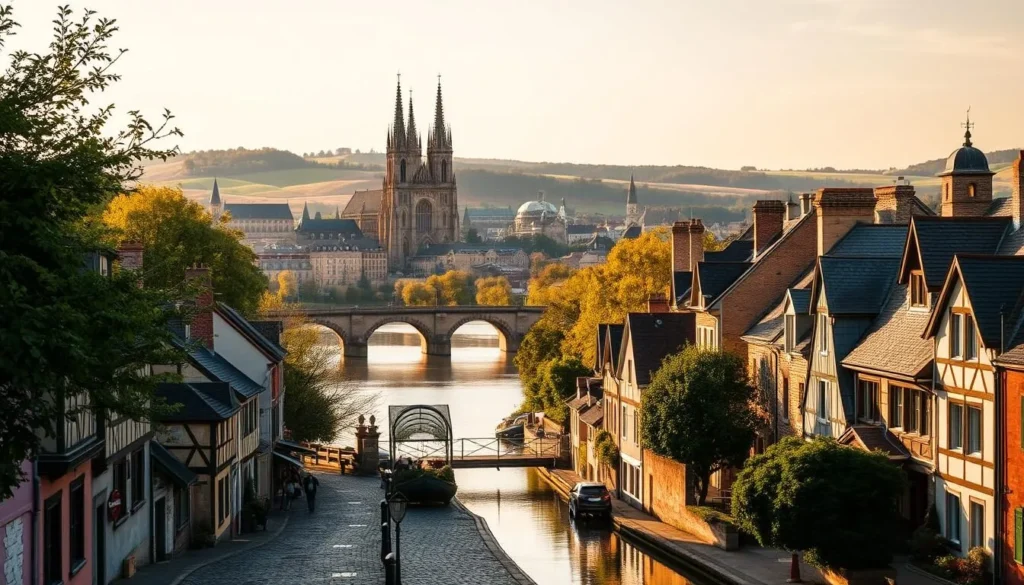
Each of these cities offers a unique experience, from historic landmarks to cultural events and local cuisine. Whether you’re exploring the medieval quarters, visiting famous châteaux, or simply enjoying the local produce, the Loire Valley’s charming cities and towns are sure to captivate you.
Loire Valley, France: Best Things to Do Beyond Castles
The Loire Valley is more than just its stunning châteaux; it’s a haven for outdoor enthusiasts. While the castles are a major draw, the region’s natural beauty and diverse activities offer something for everyone.
Exploring the Loire River by Canoe
One of the best ways to experience the Loire Valley is by canoeing or kayaking on the Loire River. This allows you to see the châteaux from a different perspective and enjoy the region’s natural beauty. The Loire River offers 900 km of navigable waterways, making it an ideal destination for paddlers of all skill levels.
- Paddle through the calm waters and enjoy the scenery.
- Experience the valley as travelers did centuries ago.
- Consider an overnight canoe trip for a truly memorable experience.
Cycling Through the Countryside
Cycling is another great way to explore the Loire Valley. The La Loire à Vélo cycling route spans 800 kilometers, taking you through picturesque villages, vineyards, and forests. The flat terrain makes it accessible to riders of all abilities.
| Activity | Duration | Terrain |
|---|---|---|
| Canoeing | Half-day to multi-day | Waterways |
| Cycling | Half-day to multi-day | Flat, scenic routes |
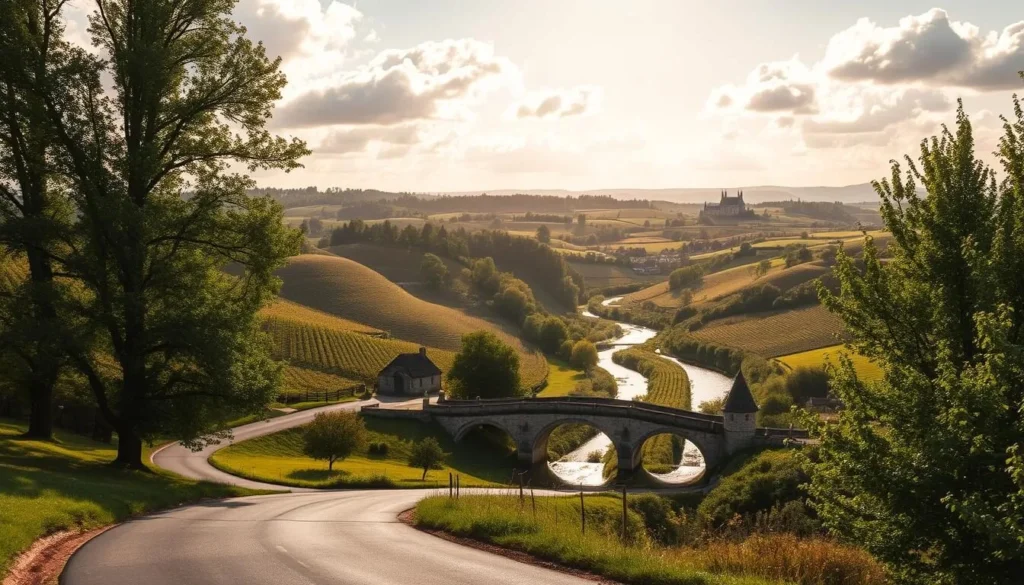
Whether you choose to canoe or cycle, you’re sure to have a memorable experience in the Loire Valley. The region’s natural beauty and diverse activities make it an ideal destination for outdoor enthusiasts.
Hot Air Ballooning: See the Loire Valley from Above
A hot air balloon ride offers a unique perspective on the Loire Valley’s breathtaking beauty. You’ll float silently above the region’s majestic châteaux, vineyards, and the meandering Loire River, taking in the spectacular views.
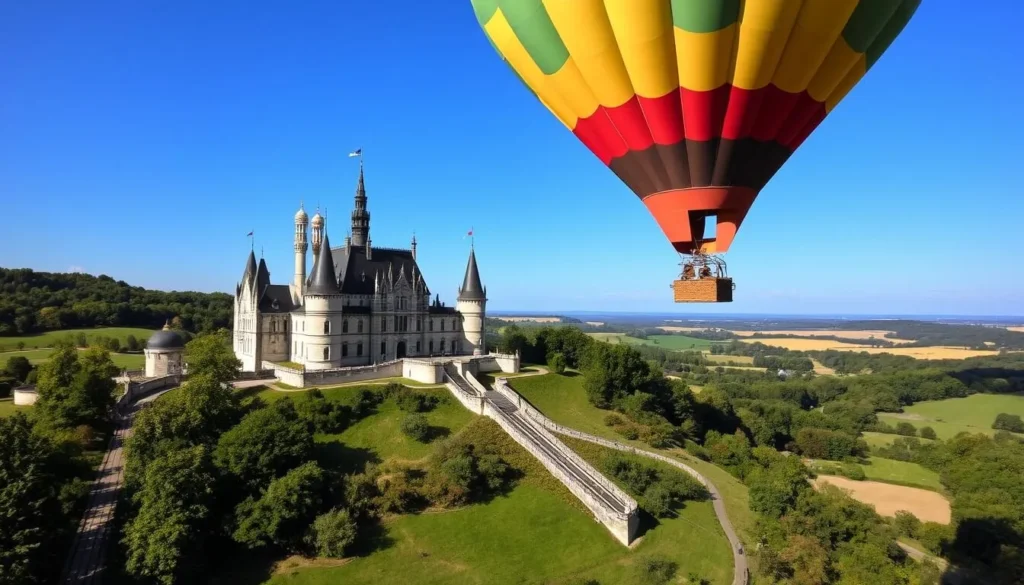
The Most Magical Way to View the Châteaux
Hot air ballooning in the Loire Valley is a magical experience, offering a bird’s-eye view of the Renaissance gardens and the strategic positioning of the castles. The Loire Valley is considered one of the premier ballooning destinations worldwide due to its favorable weather conditions and relatively flat terrain.
You’ll enjoy the most spectacular and unforgettable views of the region’s landmarks, making for an unforgettable experience in a truly unique setting.
Best Times and Places for Balloon Flights
The best times for hot air balloon flights are early morning and late afternoon when the air is most stable. Popular launch sites include areas around Amboise, Chenonceau, and Chambord, offering flights that typically last 1-2 hours.
Most balloon companies operate from April to October, with peak season being May through September. Each flight is unique, as balloons follow the wind’s path, making every journey a different experience at a different time and in a special place.
Wine and Gastronomy in the Loire Valley
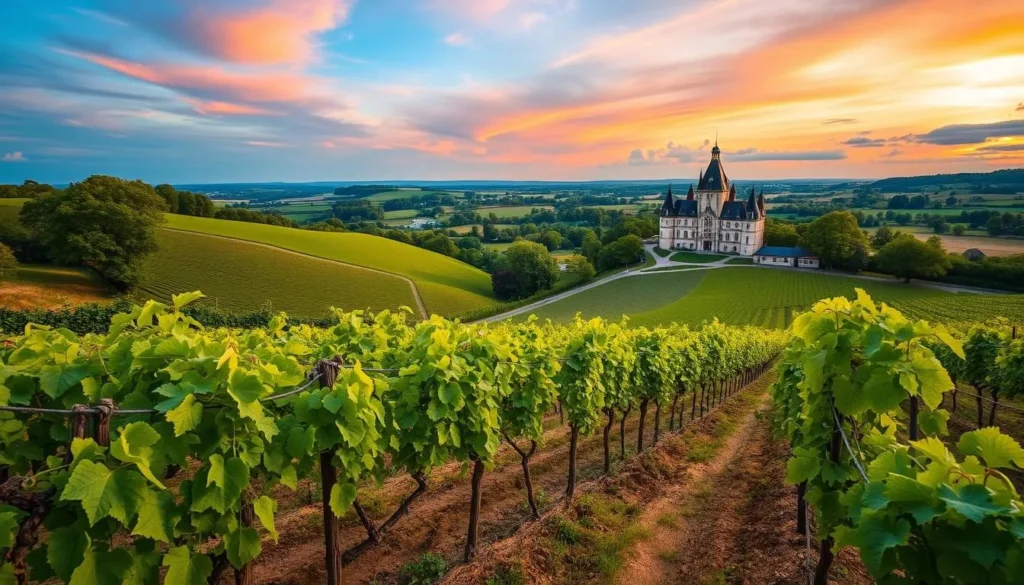
Indulge in the rich flavors of the Loire Valley, where fine wine and local gastronomy come together. The region is celebrated for its exceptional wines and culinary delights, making it a paradise for foodies and wine enthusiasts.
The Loire Valley is France’s third-largest wine region, producing wines that perfectly complement the local cuisine. You can explore the vineyards and experience the diverse terroirs along the river.
Famous Loire Valley Wines: Sancerre, Pouilly-Fumé, and Chenin Blanc
The Loire Valley is home to some of the world’s most acclaimed wines, including Sancerre and Pouilly-Fumé, made from Sauvignon Blanc grapes. These wines are known for their crisp acidity and mineral notes. Vouvray, made from Chenin Blanc, is another standout, offering a range of styles from dry to sweet.
Some key facts about these wines include:
– Sancerre and Pouilly-Fumé showcase the region’s limestone and flint soils.
– Vouvray demonstrates remarkable versatility, producing everything from bone-dry to sweet dessert wines.
Local Culinary Specialties to Try
The Loire Valley’s gastronomic specialties are a reflection of its rich culinary heritage. Be sure to try the local goat cheeses, such as Crottin de Chavignol and Sainte-Maure de Touraine. Game and freshwater fish are also prominent, with dishes like pike in beurre blanc sauce being a highlight.
Other regional specialties include rillettes (a rustic pâté), fouace (a traditional bread), and tarte Tatin (upside-down apple tart). For a memorable experience, consider arranging a vineyard picnic featuring local wines and regional products.
Where to Stay in the Loire Valley
To fully immerse yourself in the beauty of the Loire Valley, consider staying in one of its many historic châteaux or quaint B&Bs. The region offers a diverse range of accommodations that can enhance your experience, from luxurious château hotels to intimate family-run bed and breakfasts.
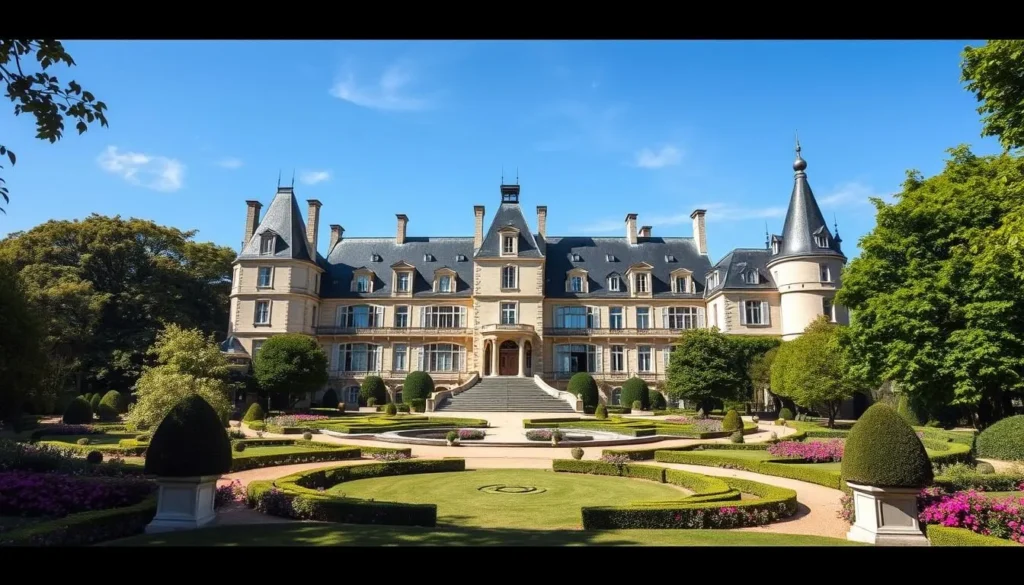
Luxury Château Hotels
For a truly memorable experience, consider spending at least one night in a château-hotel where you can live like royalty in historic surroundings while enjoying modern comforts. Château hotels like Château de Rochecotte, Les Sources de Cheverny, and Château du Rivau offer luxurious rooms in authentic historic settings, with rates typically starting around €220-250 per night.
Charming Bed and Breakfasts
For a more intimate and affordable option, the region’s charming bed and breakfasts (chambres d’hôtes) provide personal hospitality and local knowledge from resident owners. La Perluette B&B in Blois offers comfortable rooms starting at €134 per night, with a central location perfect for exploring the surrounding attractions.
Whether you choose a luxurious château or a cozy B&B, booking your room well in advance is advisable, especially during peak season (May through September).
Planning Your Loire Valley Itinerary
With so much to see and do in the Loire Valley, planning your trip in advance is crucial to ensure you don’t miss out on the region’s highlights. A well-planned itinerary allows you to make the most of your time and experience the best that the Loire Valley has to offer.
Duration of Your Visit
Determining how many days to spend in the Loire Valley depends on your interests and travel style. Most visitors find that at least 3-4 days are necessary to see the major highlights without feeling rushed. For a more comprehensive experience that includes visiting major châteaux, wine tasting, and exploring the charming towns, consider allocating 5-7 days.
- First-time visitors should prioritize the “must-see” trio of Chambord, Chenonceau, and either Amboise or Cheverny.
- A packed two-day itinerary can include these highlights if you’re short on time.
Getting Around: Car Rental vs. Tours
Deciding how to get around the Loire Valley is a crucial part of planning your trip. Renting a car offers the most flexibility, allowing you to visit rural châteaux, vineyards, and scenic viewpoints that aren’t easily accessible by public transportation. You can rent a car at Charles de Gaulle Airport in Paris, with the drive to the Loire Valley taking approximately 2-2.5 hours.
- If you prefer not to drive, consider basing yourself in Tours or Blois, which have good train connections and offer organized tours.
- Several companies offer guided small-group or private tours that provide historical context and handle all transportation logistics.
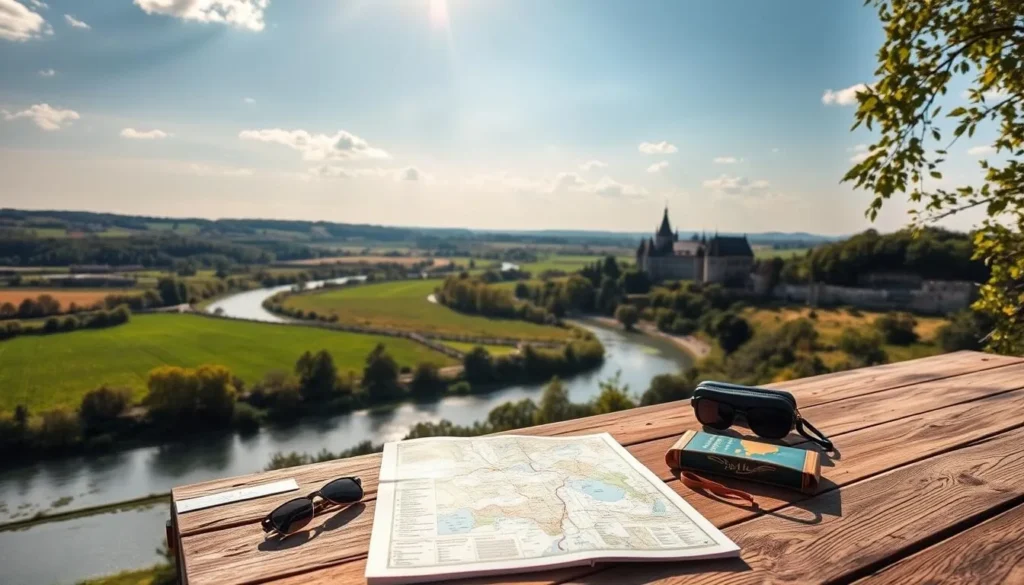
Conclusion: The Timeless Appeal of the Loire Valley
The Loire Valley offers an unforgettable experience, combining elegance, refinement, and the essence of French culture. Visitors from around the world are captivated by its perfect blend of natural beauty, architectural splendor, and cultural richness. Whether you’re marveling at Renaissance châteaux or paddling along the Loire River, the region provides countless ways to create lasting memories.
As you depart the Garden of France, you’ll take with you not just photographs but a deeper appreciation for the art, architecture, cuisine, and joie de vivre that make this UNESCO World Heritage site truly special. The Loire Valley’s timeless appeal lies in its ability to transport visitors to a more gracious time while offering modern comforts and experiences.
The above is subject to change.
Check back often to TRAVEL.COM for the latest travel tips and deals.
